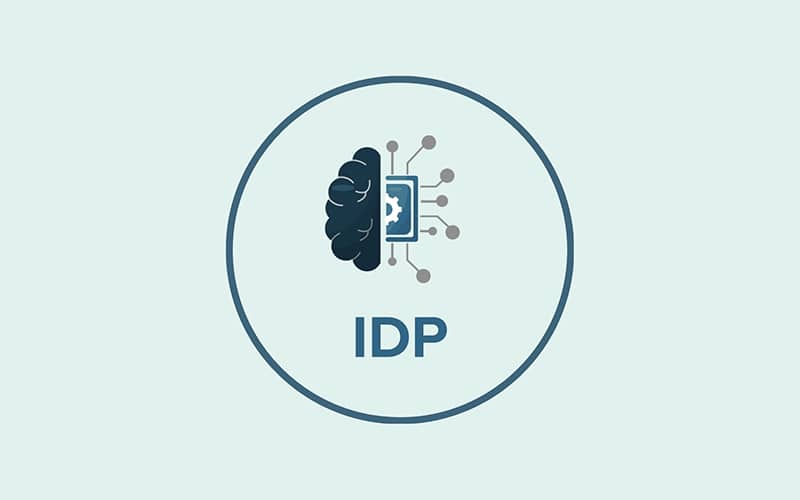You’ve seen the bottlenecks. Accounts payable teams drowning in invoices. Claims adjusters buried in forms. Legal teams spending hours on data entry instead of real analysis.
The manual document processing grind is expensive, slow, and error-prone.
Intelligent document processing platforms use artificial intelligence, machine learning, and natural language processing to automate the capture, classification, and extraction of information from any document type. This shift from manual entry to intelligent automation delivers measurable ROI, with some companies achieving a 2.62x return within three years.
In this guide, I’ll walk you through the six core components that make a strong IDP platform work. We’ll cover document ingestion, data extraction, classification, validation, and integration capabilities. You’ll see exactly how each piece connects, with real performance data and vendor examples, so you can evaluate which features matter most for your specific workflow.
Key Takeaways
- Intelligent Document Processing (IDP) platforms use AI, machine learning, and natural language processing to automate document handling for faster results and fewer errors.
- Automated data validation with AI agents helps catch errors in real time during large-scale workflows such as auditing or invoice management.
- Human-in-the-loop review remains vital for quality assurance in complex cases or where machine confidence is low, improving system accuracy through user feedback.
- Integration uses APIs to connect IDP platforms with business apps for seamless workflow automation across sectors, including finance, healthcare, logistics, and insurance.
Document Ingestion
Document ingestion is where physical paper transforms into searchable digital data. Computer vision and artificial intelligence now collect documents from multiple sources with minimal manual work.
This is the entry point for every automated workflow. Get it wrong here, and the rest of your pipeline inherits the error.
Scanning and digitization
Physical paper documents require scanning as the first step in document ingestion. Modern scanners capture images from worn pages, dirty forms, and crumpled receipts. Intelligent document processing automates this process for batch operations and handles both pristine and imperfect paper sources.
The system performs automated cropping to ensure each scan ends up a uniform size. This keeps file management simple and predictable.
After scanning, digitization creates electronic copies ready for automated workflows and data entry automation. The system splits large batches into individual PDFs for smooth downstream processing. Immediate document classification happens right after scanning using automated methods built into IDP to identify file types. This triggers the right workflow without manual sorting, saving you hours per day on routine tasks.
Optical Character Recognition (OCR)
Optical Character Recognition reads printed and handwritten text from scanned documents. IDP uses high-accuracy OCR to process worn or crumpled papers for the logistics and construction fields. This means old invoices, faded delivery notes, and receipts convert into digital data quickly.
Enterprise-grade AI handles transactional documents with OCR across many formats. Modern OCR delivers accuracy beyond 99% on clean, typewritten text. Handwritten text presents more challenges due to style variations. Handwriting OCR achieves up to 95% accuracy for legible text, while cursive handwriting generally delivers upwards of 50% accuracy that improves with training.
OCR combines machine learning and artificial intelligence to automate data extraction in real time. Enterprises use these solutions to handle multilingual support, process large volumes quickly, and manage workflow automation without manual entry errors slowing them down.
Data Extraction
Intelligent data extraction uses machine learning, artificial intelligence, and natural language processing for accurate document analysis. It supports both structured and unstructured data, helping businesses achieve fast automation and better workflow optimization.
Structured and unstructured data handling
IDP platforms sort and pull details from structured data like tables in invoices or forms, and from unstructured data like free-flowing text in emails or contracts. They convert unstructured documents, including receipts and insurance files, into structured formats for easy use.
These platforms are capable of grabbing typed words and handwriting from images of scanned papers. Uses Natural Language Processing (NLP), Named Entity Recognition (NER), structure analysis, and domain rules to process every document style.
The difference between these data types matters for your automation strategy:
- Structured data follows a predictable format with clear fields, making extraction straightforward and highly accurate
- Unstructured data requires contextual understanding, where AI must interpret meaning from paragraphs, clauses, and mixed layouts
- Semi-structured data, like invoices, combines both, with standard fields but varying formats across vendors
These systems allow information retrieval, no matter if the source is a neat table or free-form paragraphs.
AI-based field recognition
AI-based field recognition uses Artificial Intelligence, Machine Learning, and Natural Language Processing to find and pull specific data from documents.
These platforms work with both structured and unstructured data types. They do not need predefined templates to recognize key information fields within contracts or invoices. Automation helps reduce manual effort while improving the accuracy of data extraction across formats and languages.
Classification and Categorization
Classification and categorization help teams organize files using artificial intelligence, computer vision, and machine learning. This step supports automation, making document processing faster and easier for large businesses.
Document type detection
IDP’s classification auto-identifies document types, so the system knows whether it’s dealing with invoices, contracts, or insurance forms. This triggers automated workflows and ensures information extraction gets handled in the right way for each document. These systems can spot what needs long-term storage, which speeds up digital archiving and keeps records easy to find.
AI detection makes big volumes simple to manage. IDP platforms offer pre-trained models for over 150 use cases, allowing organizations to fast-track automation right out of the box.
With pre-trained use cases, teams can start automated workflows for common files right away. This cuts manual work and supports better workflow automation across departments.
Metadata tagging
Metadata tagging adds important information to documents for fast information retrieval and accurate data classification.
Automated metadata tagging triggers workflows in the document management platform. This supports process automation and makes compliance reporting easy.
Advanced metadata enrichment supports knowledge discovery and semantic search across millions of files. Intelligent Indexing occurs before storage and allows users to confirm or correct tags for better data normalization and analytics.
Enterprises use these features to speed up information access, improve automated workflows, and meet regulatory needs efficiently. In industries like banking and insurance, precise metadata tagging is the difference between passing an audit and facing penalties.
Validation and Verification
Accurate data extraction depends on both automated checks and human review. These validation steps support workflow automation in large enterprises. Artificial intelligence and machine learning help identify errors early, protecting the quality of information for further document automation.
Automated data validation
Automated data validation uses intelligent automation to check information quickly and accurately. Here’s how validation works at scale:
- AI agents review transactional documents for errors or mismatches in real time
- Automatically extracts numbers from audit papers, then matches totals to catch mistakes early in the workflow
- The system includes validation checks as part of its daily back-office operations
- It compares validation procedures during extraction tasks, keeping data integrity high
This level of precision keeps the entire document processing cycle reliable from start to finish.
Human-in-the-loop for accuracy
Human-in-the-loop review adds needed human oversight for accuracy in IDP platforms. IDP’s Intelligent Indexing allows users to confirm or correct data before final storage. This process helps train the AI using user corrections and improves results over time.
Human-in-the-loop systems boost accuracy from around 80% to 95% or higher by combining automation with human oversight. This added human involvement is necessary in industries with compliance requirements, financial risks, or sensitive documentation.
High-stakes workflows such as compliance or regulatory checks rely on humans to review exceptions or cases with low machine confidence.
AI-based systems can handle most documents but may misread complex formats or handwriting. Here, a human reviewer steps in to check data validation and handle exception handling quickly. Many enterprises invest in partner-provided training to improve machine learning models through real-world feedback.
Human review keeps quality assurance high and supports accurate document indexing across critical business operations. Each time a human reviewer corrects data, the platform leverages this information in future training to increase overall accuracy and reduce manual workload over time.
Integration and Workflow Automation
Integration connects your document management system with other business applications. This allows data to move where it’s needed without manual transfers. Workflow automation uses AI and machine learning to direct documents, handle approvals, and support digital improvements across your company.
APIs for system integration
APIs connect intelligent document processing platforms to many enterprise systems, cloud services, and workflow applications. Here’s what effective API integration delivers:
- Seamless data flow between IDP and existing ERP, CRM, or ECM systems without manual data transfer
- Real-time processing that enables immediate action on extracted document data
- Standardized connection protocols that work across multiple vendor platforms
- Scalable architecture that handles increasing document volumes as your business grows
These connections help automate tasks, share information between departments, and handle different document formats without extra steps. According to Avasant’s 2024 research, larger enterprise application providers are acquiring IDP vendors to strengthen their product portfolios and drive industry consolidation.
Seamless workflow orchestration
Seamless workflow orchestration keeps document processing fast and organized. Low-code or no-code interfaces play a key role here, letting teams set up automation without heavy IT help.
End Note
Intelligent Document Processing platforms help businesses automate data extraction from all types of documents. These systems combine machine learning, natural language processing, and computer vision for better document classification and workflow automation.
Organizations get faster processing times and higher accuracy when using these solutions across different formats, like paper or digital files. With IDP, companies solve document analysis challenges while improving overall process efficiency.
FAQs
1. What are the core components of an intelligent document processing platform?
The core components are optical character recognition (OCR) for text digitization, natural language processing (NLP) to understand context, and machine learning for continuous improvement. Platforms like ABBYY Vantage use these tools to automate data extraction from documents and classify them by type, such as invoices or contracts.
2. How does optical character recognition work in document processing?
Optical character recognition uses engines like Google’s Tesseract to convert images of text into machine-readable data, often achieving high accuracy on clear, printed documents.
3. Why do intelligent document processing platforms need machine learning?
Machine learning allows the platform to learn from corrections made by users, a process called “human-in-the-loop” validation, which progressively improves data extraction accuracy. This continuous learning is what separates modern IDP from older, template-based systems.
4. Can these platforms handle different types of business documents?
Yes, modern IDP systems can process structured data from forms, semi-structured data from invoices, and unstructured text found in legal contracts. Platforms such as Hyperscience are designed to handle high document variability without needing pre-defined templates, which is a significant advantage.








